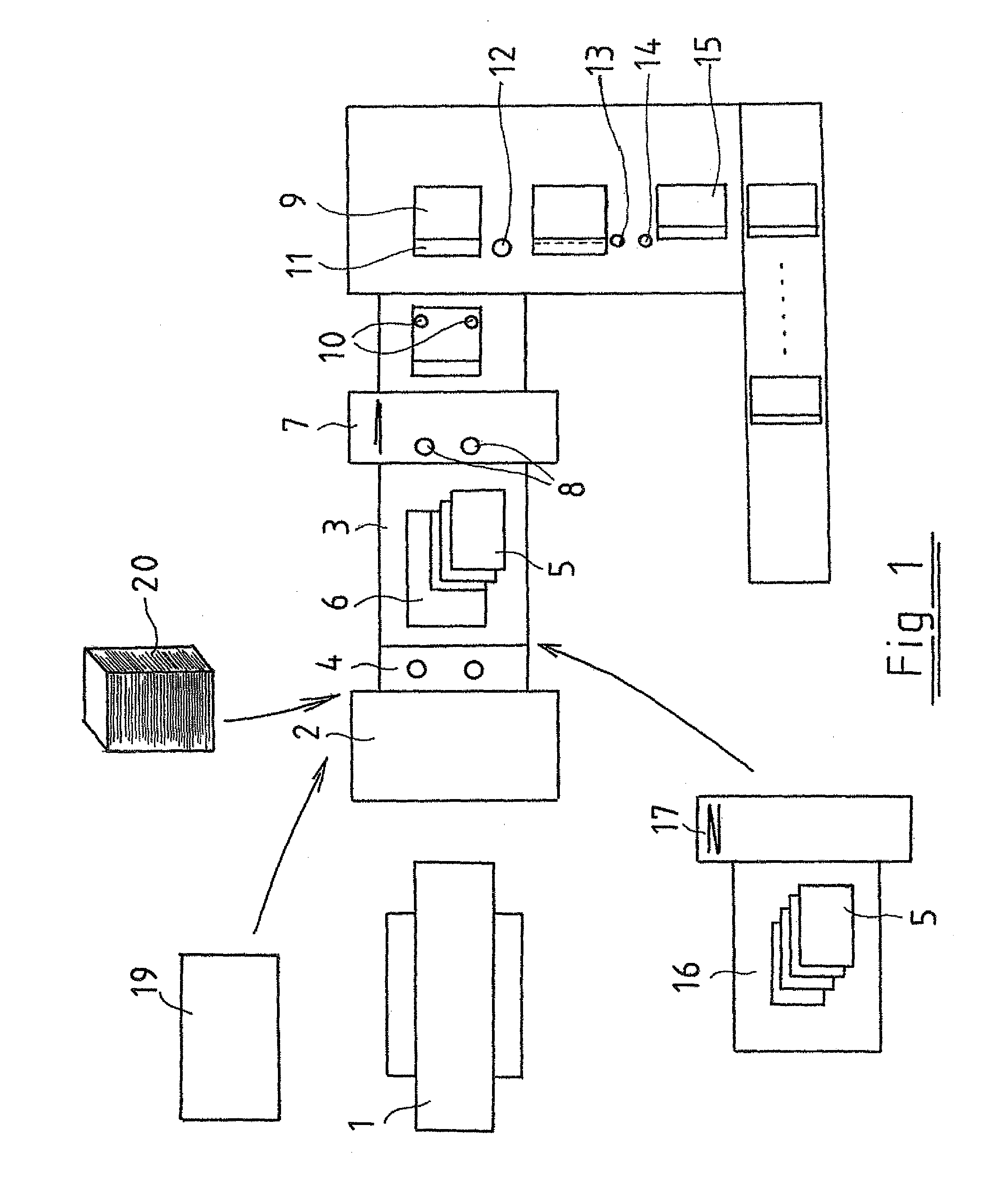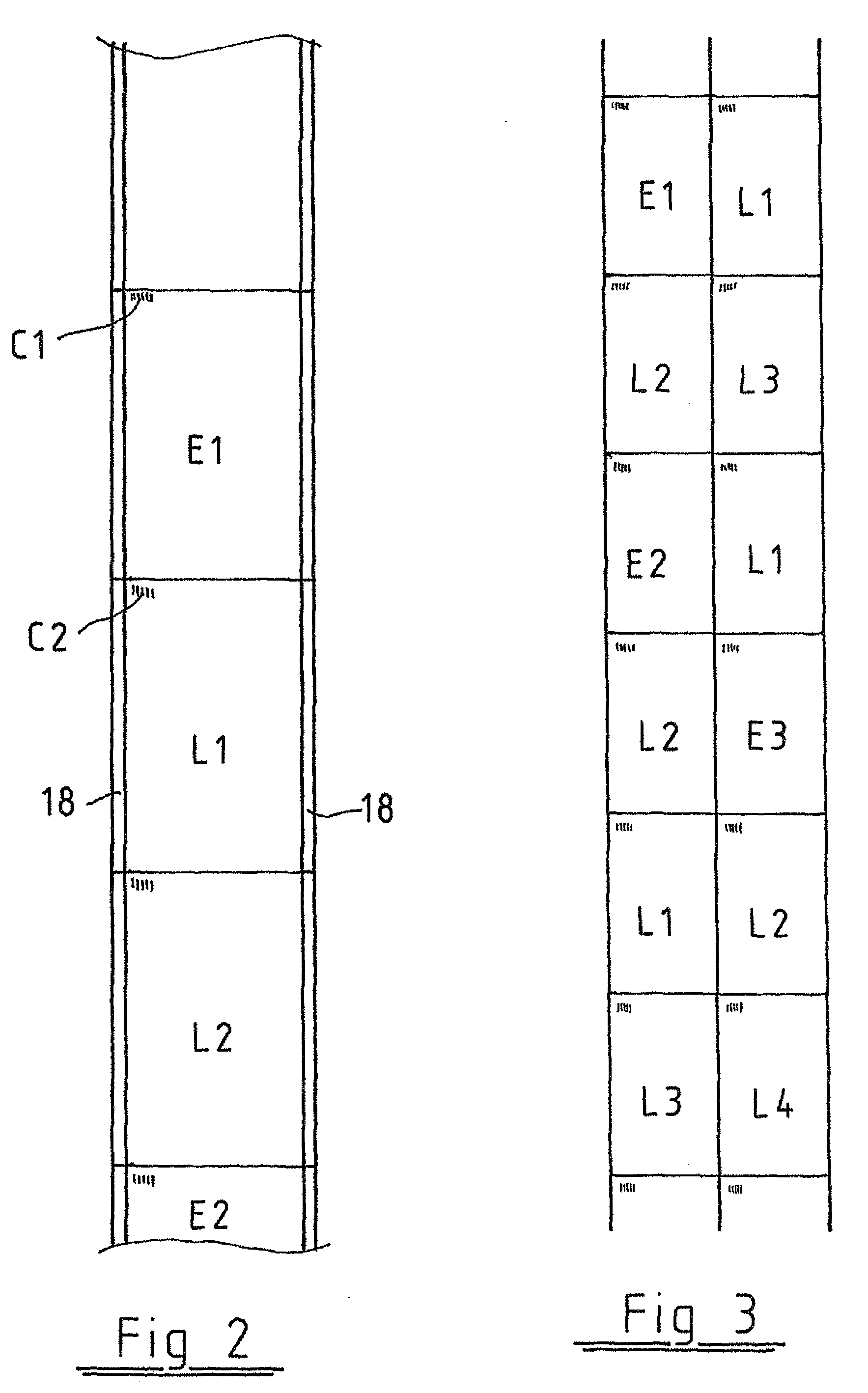Method for forming individual letters provided with envelopes
a technology for forming individual letters and envelopes, applied in envelope closers, wrapping/bundling articles, baking, etc., can solve the problems of paper waste of 20-30% only being accepted, complex method, and full field assigned for a single printout, so as to reduce the waste percentage of paper. , the effect of quick and reliabl
- Summary
- Abstract
- Description
- Claims
- Application Information
AI Technical Summary
Benefits of technology
Problems solved by technology
Method used
Image
Examples
Embodiment Construction
[0025]FIG. 1 schematically represents one embodiment of the method in accordance with the invention. First, envelope forms E1, E2, E3, . . . and letter forms L1, L2, L3, . . . , which are to be formed into sealed mail pieces, are printed on a paper web 1. The method of printing the envelope forms and the letter forms on the paper web may vary, and the alternatives have been described in more detail in FIGS. 2 and 3.
[0026]In the printed paper web 1, the envelope form may come first, followed by the letter forms which are made into letters and inserted in the envelope formed of the envelope form. First, the envelope form 6 is cut with a cutter 2 of the paper web acquired from the unwound web reel and is led to a holding stage 3. It is also possible that the paper web used is wider, i.e. comprising two printed forms side by side. In this case, the cutter 2 preferably cuts the web first in two in the longitudinal direction, and the forms are then cut of the acquired two webs and led for...
PUM
| Property | Measurement | Unit |
|---|---|---|
| length | aaaaa | aaaaa |
| width | aaaaa | aaaaa |
| movement | aaaaa | aaaaa |
Abstract
Description
Claims
Application Information
 Login to View More
Login to View More - R&D
- Intellectual Property
- Life Sciences
- Materials
- Tech Scout
- Unparalleled Data Quality
- Higher Quality Content
- 60% Fewer Hallucinations
Browse by: Latest US Patents, China's latest patents, Technical Efficacy Thesaurus, Application Domain, Technology Topic, Popular Technical Reports.
© 2025 PatSnap. All rights reserved.Legal|Privacy policy|Modern Slavery Act Transparency Statement|Sitemap|About US| Contact US: help@patsnap.com



